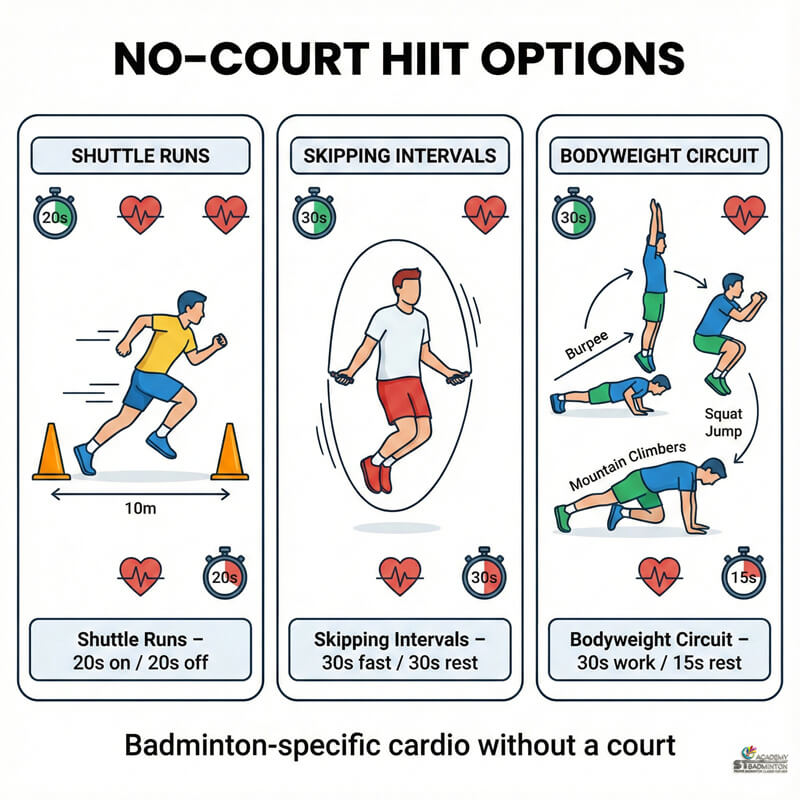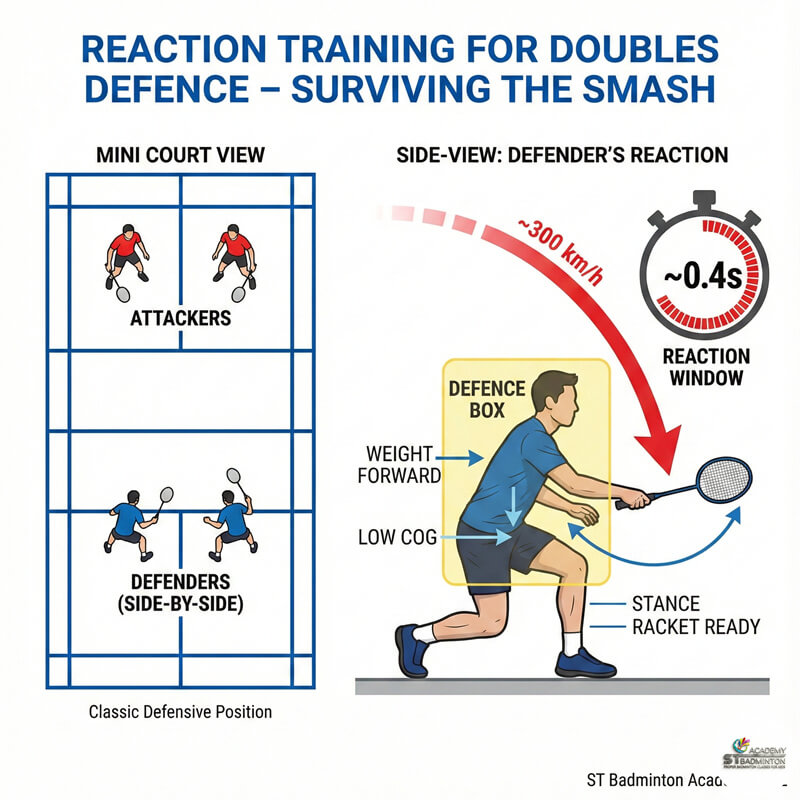Welcome to ST Badminton Academy’s badminton training in Malaysia! I know all too well the importance of managing your energy levels during practice and on game day. It’s critical in order to stay focused and perform at your best. If you’re struggling with this, don’t worry – there are plenty of tips out there that can help. In this article, I’m going to be discussing the top strategies for keeping your energy up when it comes to badminton training. So let’s get started – by reading through these key points, you’ll soon have the knowledge and motivation you need to make sure you give every session 100%.
Get Adequate Rest
Being a successful badminton training expert isn’t easy – it takes dedication, hard work, and most of all, energy. As if climbing an invisible staircase to the top of success, managing your energy is key in order to reaching peak performance during practice and competition. To help out aspiring badminton players, here are my top tips for managing your energy levels:
First up is getting adequate rest. It’s like throwing fuel into the engine before taking off on a long journey – you need that extra bit of energy for every step of the way! Planning ahead can really pay dividends as well; having a consistent sleep schedule will ensure that each day you’re energized enough to tackle any challenge thrown at you. Also, try tracking your progress by keeping note of how much rest you get per night and aim to improve over time – this way you’ll be able to identify where best to focus your efforts when tackling fatigue.
With sufficient rest comes nutrition – fueling our bodies with nutritious foods gives us the necessary nourishment we need to stay alert both mentally and physically throughout badminton training sessions.
Eat Nutritious Foods
Good rest is essential for managing energy levels during badminton training, but that’s not the only factor. In order to keep up your endurance and stamina on the court, it’s important to fuel efficiently with nutritious foods as well. Eating regularly helps maintain a steady supply of glucose in the bloodstream which can help prevent fatigue. There are certain items you should make sure to include in your diet such as carbohydrates, proteins, vitamins, and minerals. Complex carbs like whole grains provide long-term energy while simple sugars offer short bursts of energy; both are beneficial at different times throughout your training session. Protein helps rebuild muscles after an intense workout while vitamins and minerals act as antioxidants that protect cells from damage caused by free radicals produced during exercise.
In addition to eating right, hydration also plays an important role in maintaining optimal energy levels during badminton training. Staying properly hydrated will ensure there is enough fluid available for muscle contraction and other physiological processes taking place within the body when you’re putting forth effort on the court. It’s best to avoid sugary drinks or caffeinated beverages before playing since they may lead to dehydration over time due to diuretic effects. Water should be your go-to beverage choice so that you don’t feel weighed down while still getting proper hydration needed for peak performance. With these tips in mind, you’ll be able to stay energized and perform optimally out on court!
Stay Hydrated
One statistic that might hook the audience is this: The average person loses up to 83 ounces of fluid during a single hour of badminton training. That’s more than five water bottles! Staying hydrated is one of the most important aspects of managing your energy levels when it comes to badminton training.
I recommend drinking plenty of fluids throughout the day and before, during, and after practice sessions in order to stay refreshed. This can include plain or flavored water, milk, sports drinks, electrolyte-enhanced beverages, etc. Make sure you have access to these types of liquids so you don’t get dehydrated while playing. Additionally, avoid sugary or caffeinated drinks as they may cause dehydration over time.
It’s also important to listen to your body and take breaks if needed. Have a break for at least 10 minutes every couple of hours and drink some fluids then too–this will help keep your energy levels up and prevent fatigue from setting in. With proper hydration strategies in place, you’ll be able to maximize your performance on the court and enjoy every step along the way! Transitioning into light exercise next is an essential part of maintaining your energy levels.
Do Light Exercise
I’m a big believer in light exercise when it comes to managing your energy levels during badminton training. Other than choosing a good racket and also remember to choose the best racket restring in Malaysia. It doesn’t have to be anything too strenuous, just something that loosens up your muscles and gets you ready for the hard work ahead. Here are some tips that I’ve found really helpful:
| Tips for Managing Energy Levels in Badminton Training | Importance | Examples |
|---|---|---|
| Incorporate Light Exercise Before Training Sessions | Loosens muscles and mentally prepares for intense workouts | – Engage in stretching exercises before each session to reduce stiffness |
| – Choose exercises that are not too strenuous, focusing on flexibility | ||
| Track Progress Throughout the Week | Provides motivation and a sense of improvement | – Keep a record of your performance and assess progress over time |
| – Monitoring improvement helps stay motivated and sets goals for future sessions | ||
| Take Regular Breaks Between Sets or Drills | Prevents fatigue and aids physical recovery | – Schedule breaks to allow the body to recover and prevent burnout |
| – Short breaks between sets or drills help maintain energy levels | ||
| – Avoids overexertion and ensures sustained performance throughout the session |
These tips, provided by someone emphasizing the benefits of light exercise in managing energy levels during badminton training, focus on incorporating stretching exercises before sessions, tracking progress for motivation, and taking regular breaks to prevent fatigue and promote recovery.
These three simple steps can make all the difference when it comes to managing your energy levels during badminton training sessions. By taking care of yourself both physically and mentally, you’ll be able to push yourself harder while still staying safe and avoiding burnout. Now let’s move onto another important element of successful badminton training: visualization techniques!
Use Visualization Techniques
Training for badminton can feel like a marathon — long, arduous and tiring. But with the right techniques you can keep your energy levels up to sustain yourself through those gruelling sessions and enhance your focus and concentration in the process. Visualization is one such technique that will help you go the distance in training.
Visualization involves creating an image or scenario in your head as if it were already happening. It doesn’t just have to be related to badminton; it could include seeing yourself winning a match, being praised by coaches or even simply feeling relaxed during a tough session. By focusing on these positive images and scenarios, not only will you improve your mental strength but also reduce fatigue and stress during training.
The biggest benefit of visualization is its ability to create clarity and motivation when dealing with difficult tasks during practice – whether it’s hitting forehands more accurately or executing jump smashes faster than ever before . With this newfound focus, you’ll be able to maximize each moment spent on court while developing greater concentration over time! As you become better at visualizing success, there’ll be no stopping you from achieving your goals.
Break Up Long Sessions
When it comes to long badminton training sessions, it’s important to schedule in some breaks. I always suggest taking at least a five minute break every hour during a session to re-energize. During those breaks, it’s also important to step away from the court and move around; it’ll help keep your energy up and your body fresh. Finally, remember to hydrate – it can make all the difference when it comes to keeping your energy levels up during long training sessions.
Scheduling Breaks
Scheduling breaks is key to managing your energy levels in badminton training. As a badminton coach, I always stress the importance of planning ahead when it comes to breaking up long sessions with short periods of rest and recovery. Making sure you plan for regular pauses throughout the session will help keep your focus shifts from becoming too draining or overwhelming. For example, if you’re playing a five-hour tournament match, make sure to take periodic 5-10 minute breaks every hour or so. This allows your mind and body some much needed respite while still keeping you focused on the task at hand. Taking these planned breaks also gives you time to reevaluate how you’re feeling during the match; this way if fatigue starts setting in, you can adjust accordingly. Ultimately, proper scheduling of breaks not only helps manage your energy output but helps prevent physical exhaustion as well!
Taking Breaks During Long Sessions
Taking breaks during long sessions is essential to not only keep your energy levels up, but also to practice mindfulness. After all, it’s easy to become overwhelmed or distracted if you don’t take the time for yourself. Scheduling regular pauses throughout a longer session allows us to avoid fatigue and gives us the opportunity to check in with ourselves. It’s important that we get out of our heads and focus on how we’re feeling; this way if exhaustion starts setting in, we can adjust accordingly. Taking these planned breaks helps keep our minds fresh and focused so that we can make sure we put our best foot forward while training! Additionally, incorporating stretches into your break times are an excellent way to release tension from muscles as well as give them some much needed rest before continuing onward.
Take Regular Breaks
Taking regular breaks is essential for managing your energy levels in badminton training. Not only does it help you improve your stamina, but it also allows you to rest and prioritize recovery. Breaks should be taken when needed – after a particularly vigorous session or if the intensity of the game starts to become too much. You can use this time to catch your breath and hydrate before continuing on with practice.
The length and frequency of these breaks will depend on individual needs and preferences, so don’t be afraid to experiment until you find what works best for you! Taking a few minutes between sets or exercises can make all the difference in terms of maintaining high energy levels throughout your session. It’s important to remember that fatigue isn’t just physical – mental exhaustion can take its toll too, so listen carefully to your body and react accordingly.
Finally, having someone around who understands how hard it can be helps keep motivation up during tough times. Sharing experiences with others gives us perspective and encourages resilience which are both invaluable assets while pushing yourself through intensive badminton training sessions. To get the most out of every workout, don’t forget to get the support of those who understand where you’re coming from!
Get The Support Of Others
Getting the support of others is essential to managing your energy levels in badminton training. Training with a partner can help to keep you motivated and on track, so finding someone who shares similar goals and objectives as yourself is key. Having an accountability buddy means that there’s someone to motivate you when things get tough, encouraging you to give it your all during each session. Working out with friends also gives you time for social interaction while still pushing hard and achieving great results.
Creating a plan will allow you to monitor progress, staying focused on what needs to be done in order to achieve success. Setting realistic short-term goals helps build confidence and encourages consistent effort over time. Make sure that any goals set are measurable so they’re easy to measure against performance throughout the process – this will help identify where adjustments may need to be made along the way. Additionally, try scheduling rest days into your routine; listening to your body and allowing recovery periods ensures that fatigue doesn’t take its toll on your motivation or ability in badminton training sessions.
It’s important not just focus solely on physical fitness but also mental wellbeing too – if we fail to look after our minds then our bodies won’t cooperate either! Learning how to remain calm under pressure whilst playing competitively is an integral part of achieving success in badminton, as well as maintaining high energy levels through regular practice drills at home or in class settings. Investing some extra time working on technique and honing skills away from matches should pay off massively come game day!
Frequently Asked Questions

How Much Rest Is Necessary To Maintain Optimal Energy Levels?
If you’re looking to maintain optimal energy levels during badminton training, proper sleep and strategic naps are essential. As a badminton training expert, I can tell you that your body needs the right amount of rest – not too much and not too little – in order for it to perform at its peak level. To ensure success on the court, make sure you get 7-8 hours of quality sleep per night and consider taking short powernaps when needed throughout the day. This will keep you energized and focused so as to maximize your performance!
What Types Of Foods Are The Most Beneficial For Energy Levels During Badminton Training?
As a badminton training expert, I recommend eating the right types of food to maintain your energy levels during practice. Eating habits are key when it comes to maximizing energy and performance on court. Complex carbs like whole grains, legumes and vegetables will provide sustained fuel for long practices, while proteins help keep you energized throughout the day. Mental preparation is also important; have snacks available to refuel before and during your practice sessions so you don’t run out of steam.
What Amount Of Hydration Is Recommended For Badminton Players?
As a badminton training expert, I’m often asked about the amount of hydration needed for players to make sure they perform at their best. To ensure you have enough energy before and during your game, it’s essential that you consume adequate amounts of fluids throughout the day. Pre-game fueling should include water or an electrolyte drink like Gatorade to prepare your body for competition. And if you are playing multiple games in one day, be sure to keep rehydrating throughout the matches with small sips of water between points or sets. Finally, restorative yoga can also help improve hydration levels by activating lymphatic fluid flow around the body which helps detoxify cells from excess toxins.
How Can Visualization Techniques Be Used To Improve Energy Levels?
Visualization techniques can be a great way to improve your energy levels during badminton training. Mental preparation is key – by visualizing yourself winning and performing at your best, it helps to increase motivation and focus before you even hit the court. Make sure you also warm up properly with exercises that target muscles specific to badminton, such as dynamic stretches and light sprints. This will help get your body ready for practice or competition while giving you an extra boost of energy!
How Long Should Breaks Be Taken During A Badminton Training Session?
Taking regular breaks throughout a badminton training session is essential for maintaining your energy levels. As an expert, I recommend that you take at least one break every hour and plan them out in advance. This will help to ensure that you can maximize the quality of each practice session by allowing yourself time to recuperate and recharge before continuing. Additionally, taking breaks allows you to get better sleep during the night which ultimately improves your overall performance as well as aiding with managing your energy levels.
Managing Energy Level in Badminton Training Malaysia
Badminton training is an intense and demanding sport, so it’s important to take care of yourself. By taking the time to ensure you are getting enough rest, eating nutritious foods, staying hydrated, and using visualization techniques, you will be able to maintain your energy levels throughout your training session. As they say – “If you fail to plan, then you plan to fail”. So make sure that you have a well-structured routine in place before each badminton session and don’t forget those all-important breaks! With these tips in mind, I’m confident that every aspiring badminton player can reach their full potential during training sessions.





